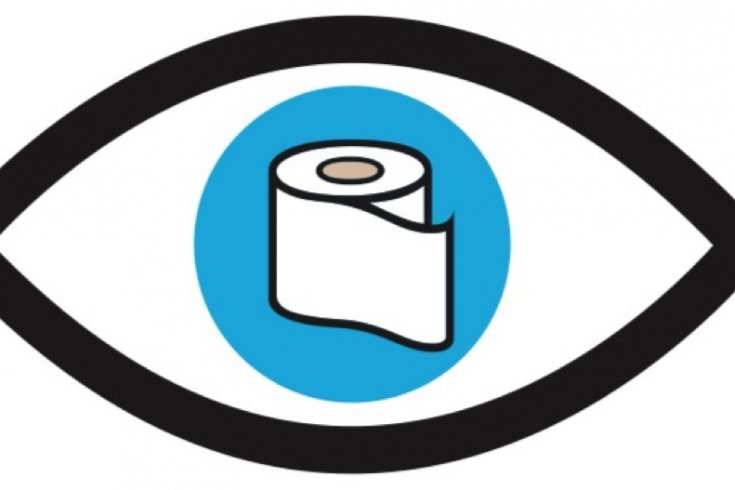
On their best days, newspaper editorialists analyze government policy statements for what they hide and reveal, beat back PR flaks and others attempting to set the agenda, and go to rhetorical war. Their job is to use trusted sources for fair comment and to ground opinion in research. The stories will move and change, and so we don’t expect definitive truth so much as a learned point of view, laced with personality and presented for argument to the drawing rooms, kitchens, and small eateries of the nation.
For a cost amounting to one-fifth of that other daily fortification, coffee and a danish—or, during this era of Canadians seeking identity, half the cost of a Tim Horton’s donut and coffee—newspaper editorialists provide us with nourishment as essential as food or drink. As formative as meditative green space or iconic architecture, the singular voices of newspaper editorialists thwart society’s tendency toward solipsism. Like all discourse based in argument, the op-ed pages are inherently social and competitive, an open book demanding responses and engagement. From these pages, modern-day town criers shout to the body politic, “Wake up. There is stuff going on that demands a hearing in the public square.”
There are those of us, for instance, who still relish the National Post’s vain-glorious editorial treatment of President Bush’s May 2003 “Mission Accomplished” photo op announcing the end of the Iraq war and a job well done. “We Told You So,” shouted the Post, and it lined up the modern-day poster boys of “Might is Right—“all of them, Canadian and American alike, singing from the same song sheet. They got it wrong, of course, the fog of Vietnam having overtaken even the best of intentions on that scarred battlefield. But never mind, the moment was delicious, and one had to admire the Post for its triumph of hope over experience, for its editorial chutzpah.
With US Vice-President Dick Cheney trying to decide whether the insurgency in Iraq is “in its last throes” (his 2005 description) or has reached “a stage of desperation” (to date, his 2006 assessment), how wondrous it would be for the so-called liberal press to take a flyer and line up the Babes of Babylon (say Gloria Steinem, Amy Goodman, Naomi Klein, and Linda McQuaig) for a “We Told You So” spread of their own.
But these are timorous times. Risk-takers are fewer and farther in between, and, as it recedes into the past, the very notion of a public square seems amorphous, distant, and perhaps unnecessary. Still, there are voices saying “I might be wrong, but ours is a game of educated risk and I’ll have a go.” Editorialists James Travers (in Ottawa, all the world’s a stage), Chantal Hébert (the shifting sands of our two solitudes), Andrew Coyne (wit, sometimes taciturn, often shrewd), Margaret Wente (like Norman Mailer, overconfident on all subjects), Rex Murphy (loquacious and, because it is good for us, determined to employ language rapidly losing its common currency), and others soldier on, providing spice, acid, and meaty facts for the country stew. And good for them: they should be household names evoking agreement, hostility, and on off-days, indifference. For without such risk-takers it is hard to imagine what a public square might be, and harder still to imagine that our democracy is anything but a messy and noisy attempt to govern, to satisfy, and for politicians to practise the timely elisions so necessary for parliamentary tenure. The ears and eyes of columnists on this parade offer us the chance to clash symbols, beat drums, even to toss the odd baton.
Why the timorousness Could the answer lie in the latest example of “vertical integration,” the convergence between genuine newspapers and their vapid, freeze-dried, under-reported cousins, the free dailies now so popular on buses and found underfoot everywhere Torstar, responsible for the Toronto Star (among other traditional dailies), has a partnership agreement with Metro Toronto, part of the “world’s largest newspaper, with more than 18.5 million daily readers in 88 major cities in 19 countries,” as it proudly states on its masthead. That is, this cancer has spread not just across Canada, but is a global chimera, news across all borders reduced to its component parts and presented without adjectives, invectives, or life.
On its website, Torstar describes its free daily as “designed for the time-starved, young, educated, employed person who has a light appetite for traditional daily newspapers”. The obvious food for thought here is that perhaps these high-energy snackers—the young and the restless, the bright and the energized, and, presumably, Torstar executives would hope, the next generation of Toronto Star readers—are getting their daily news fill through truncated editorial copy provided by wire or news services featured in the free dailies. These short dispatches are sandwiched between and beholden to the sole source of revenue, advertisements—mostly pleas for a better life: breast augmentation with a 24-hour recovery, laser hair removal, or “thousands of adult film stars inside my TV for less than $1 a day—“and so, not to distract, the editorial copy itself is lifeless. Unbowed, the Torstar website description (of Metro Toronto) continues, breathlessly and without pause, “The paper delivers a complete but succinct news package that can be read in less than 30 minutes.” Indeed.
In response to the breaking news that traditional dailies—i.e., those following the peculiar notion that they are worth paying for—are taking a readership hit, on March 27, 2006, Metro Toronto published an article suggesting that the succinct news package is in the ascendancy and might just be enough for the busy metropolitan. For fair comment, the author of the story, the nameless, faceless Metro Toronto News Service, went after Metro Toronto publisher Bill McDonald, who staggered readers with the following: “The combination of our high-quality editorial product and targeted distribution strategy has propelled Metro into one of the top two positions among Toronto daily newspapers in several important demographic categories, including adults 18-49 and women.”
Competing for the top position is none other than crosstown rival 24 Hours, which, according to itself, “remains the fastest growing newspaper in Canada.” Also on March 27 and again in reference to grinding paid newspapers into the dust, under the banner headline “By leaps and bounds” 24 Hours ran the following bons mots: “[Publisher Bob Harris] credits the work of 24 Hours employees in every department for putting together the best news of the day in a perfect package.” The glossy and glue-bound digest, distributed by Sun Media Corporation, does not feature the Sunshine Girl—for that, one must pay—but, given that the columns are mostly bought or borrowed from wire services, the publisher must be most pleased with the advertising department. For the skin-afflicted, the liposuction adverts come fast and furious, the hair removal offers are more sexually suggestive than those appearing in Metro Toronto, and your sex life is promised to be “bigger + harder + longer = better.”
With the editorial content of free dailies so bite-sized that it is virtually indistinguishable from the “news” that being fat, bald, broke, or undersexed are all positions unworthy of good citizenship and polite company, my only problem with these freebies is that they are considered newspapers at all. Surely, the source of all this welcome news to Metro, 24 Hours, and others—the Newspaper Audience Databank (nadbank), an industry group charged with the responsibility of charting newspaper readership—has made a category mistake. Real newspapers make readers think. Seemingly knowing itself better than nadbank does, the March 27 crossword for 24 Hours begins “1 Across, Dullard,” and asks for a four-letter response.
Does the term “tabloid” not carry its own honour Given that the freebies are chained to the paid-circulation newspaper boxes on street corners across the land—saying, essentially, here I am, free and easy, so why bother with all that detail, nuance, and argument—shouldn’t the nadbank follow up its data analysis with the policy statement: the rumours are accurate, unless something is done newspapers, traditionally conceived, are done for. And if the good folks in charge of Torstar and Sun Media believe, somehow, that readers will graduate up to the paid-circulation dailies—the Toronto Star and the Toronto Sun—perhaps they should have attended superior business schools.
The clear subtext of these freebies is that in this just-in-time world they are providing all the news that is fit for print. And I see them daily, on buses and streetcars and in cafés, the perusers of the free dailies, alone and apart and lumpen, leafing through the pages in search of Sudoku, Jessica Simpson, or a hopeful advertisement, and the reader-newspaper conversation ends there. The freebies have used the shadow of legitimacy provided by their partnerships with more traditional brethren to nestle their way into the newspaper category, but what of Hébert and Travers, of Coyne, of the plain-speaking Danielle Smith and her conservative props, of Murphy’s thesaurus, or even of Robert Fulford’s stab at being the nation’s contrarian What of the Ping-Pong narratives between the editorial desks and the kitchen cabinets of the nation
Toronto’s new media moguls, Bill and Bob, and their simulacra elsewhere will fill the void, will be coming, if they haven’t arrived already, to a bus or theatre near you. Unless, of course, we do collectively what Vancouver did to Wal-Mart, the big-box-store version of the little-box tabloid now jamming up our street corners, and say “No, thank you ever so much, but the world cannot be compressed into a thirty-minute read, any more than our anxieties can be assuaged by robotic greeters, and we would rather pay for quality.”
With CanWest, owner of the National Post, giving us the Dose, among the broad-circulation newspapers only the Globe and Mail remains unencumbered by the free daily, by a loss leader in only one meaningful way: the end of those voices we need to sustain a real diet, of those voices committed to the public square. To writers over packagers: as your masters attempt to undercut you, hold out. Here, in the urban wilderness we are not yet prepackaged, and we require your shrewd commentary, snarky remarks, and the sustenance you provide for our discussions with neighbours.



